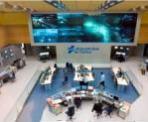Cooperative services (Vehicle To Infrastructure) are based on the European Communications Architecture ITS proposed within the ETSI framework, which, in turn, collects the ideas proposed in the CALM (Communication Access for Land Mobile) ISO designs.
The solution mainly comprises three elements: the unit onboard the vehicle, the station on the side of the highway and the control center.
The onboard unit consists of a PC architecture solution, although it is also being tested with smartphone type devices.
From station to highway level, work has been done to make the solution compatible with the 802.11p communications protocol exclusively dedicated to traffic services and therefore of great interest to the highway sector.
Different communications interfaces, 3G-Wifi, are tested from the vehicle and the infrastructure side. Also, work is being done on the TCP/IP protocol stack based on IPv6.
The interest in communications architecture lies in the implementation of services related to mobility, security and sustainability. It permits sending messages to highway users as regards the three indicated scopes, as well as more efficient highway management thanks to the direct communications channel between the operator and its users.
The two services for which Indra has validated its solution are: sending each section’s speed limit to users and sending custom routes that reduce travel times, basically improving infrastructure management.
Through the OASIS, FOTsis and InterTrust R&D projects, Indra has worked on providing a solution that is compatible with European standards to improve security, mobility and sustainability on highways.





